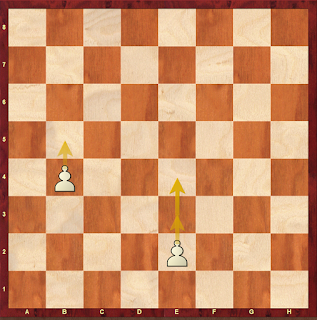The Pawn
Who is the Pawn?
Their inherent weakness can often be used as a strength, because of their lower value, they favorable trade all other pieces. Hence an attack by a pawn to a piece of larger value is seldom disregarded. Pawns are also the to support attacked pieces, and protect the king.
Pawns are the only pieces that have conditional movement. A pawn that has not moved before may move either one step or two steps forward on the first move, but after it makes a move, it can only move one step forward.
This makes pawns the only piece that is only capable of unidirectional movements, that is, pawns can not move backwards. So move your pawn moves carefully!
Pawns still have one more trick up their sleeve.
When a pawn moves up two squares, then, an enemy pawn can capture it as if it moved only one square!
For example,
Pawns have one last ability, the ability to promote!
If a white pawn reaches the 8th rank, or a black pawn reaches the first rank, the pawn promotes into any other piece that is not a king or a pawn!
The piece it turns into can be decided by the player promoting the pawn.
For example,
 In this position , it is white's turn to play. White moves his pawn to b8 and promotes it to a queen
In this position , it is white's turn to play. White moves his pawn to b8 and promotes it to a queen



Comments
Post a Comment